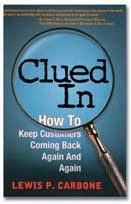Customer Experience is a term widely used in the
The concept of Customer Experience appears also a lot less sexy than Design or Innovation, and as a result receives a lot less attention. The two latter concepts feel quantifiable and concrete. Companies who claim that they can design great products and that they can be innovative now open every day. It would be interesting to count the percentage of companies, which display the word “innovation” or any of its variation on its homepage. Unfortunately for companies in
In this post, I will try to add my few cents to define customer experience and highlight the points that are crucial when building an efficient customer experience management structure. Here is how I would define customer experience:
I put this definition is the graph below:

It is about emotions!
When considering customer experience, the very first thing to do is to acknowledge that customers are people. A customer cannot be put into a labeled box or market segment and expected to stay there for the rest of his or her relationship with the company. Customers are individuals and we should say customers are changing individuals.
Several factors influence customers. Some uncontrolled factors will affect their perception and expectations of a company. For example outside information like blogs or reports can have positive or negative effects. The customers’ present need is also changing depending on his or her state of mind, the environment, and much more. Apart from uncontrolled elements, the company has a way to regulate expectations using its value proposition communicated through advertising for example. Finally and most importantly, customers’ expectations are regulated by their past experience with a company.
It is about small things!
Focusing on customer experience also necessitates the realization that small things matter. Customer experience will be impacted by things like the tone of voice of a sales person, the weather outside a shop, the blog that a customer read before purchasing a product, the argument that a customer had with his or her daughter the day before, the way the support staff at a competitor’s store handled a problem, etc.
Of course it is impossible to address all these. In the end, the company that succeeds is the one that is able to identify these “small things” and allow enough flexibility in its processes to adapt to them. Some small things may appear insignificant or may even relate to unconscious needs of customers, but they still play a very important part in exceeding customers’ expectations.
It is a virtuous circle!
Experience is not built in one day. Experience is built over time and taking a snapshot at a precise moment may not be enough to understand the whole picture. When looking at customers, companies should look at the interactions they have over time and how these interactions lead to a positive or negative experience. While a negative experience may lead to a customer breaking the relationship all in all with the company, a positive experience does not mean that customers’ expectations will be higher the next time they interact with the company. Yes, they will demand the same level of care, but their expectations will not increase indefinitely.
It actually appears that with time, as discussed in the book “Married to the Brand” written by William J. Mc Ewen (Gallup Press), customers who had a long term relationship with the company are actually less demanding than new customers. This fact even reinforces the need to focus on current customers and exceeding their expectations to keep them longer rather than targeting higher and higher customer acquisition rates.
This post is a first try at communicating about the concept of customer experience and future post will hopefully relate to this definition and highlight examples of how it translates into reality.

No comments:
Post a Comment